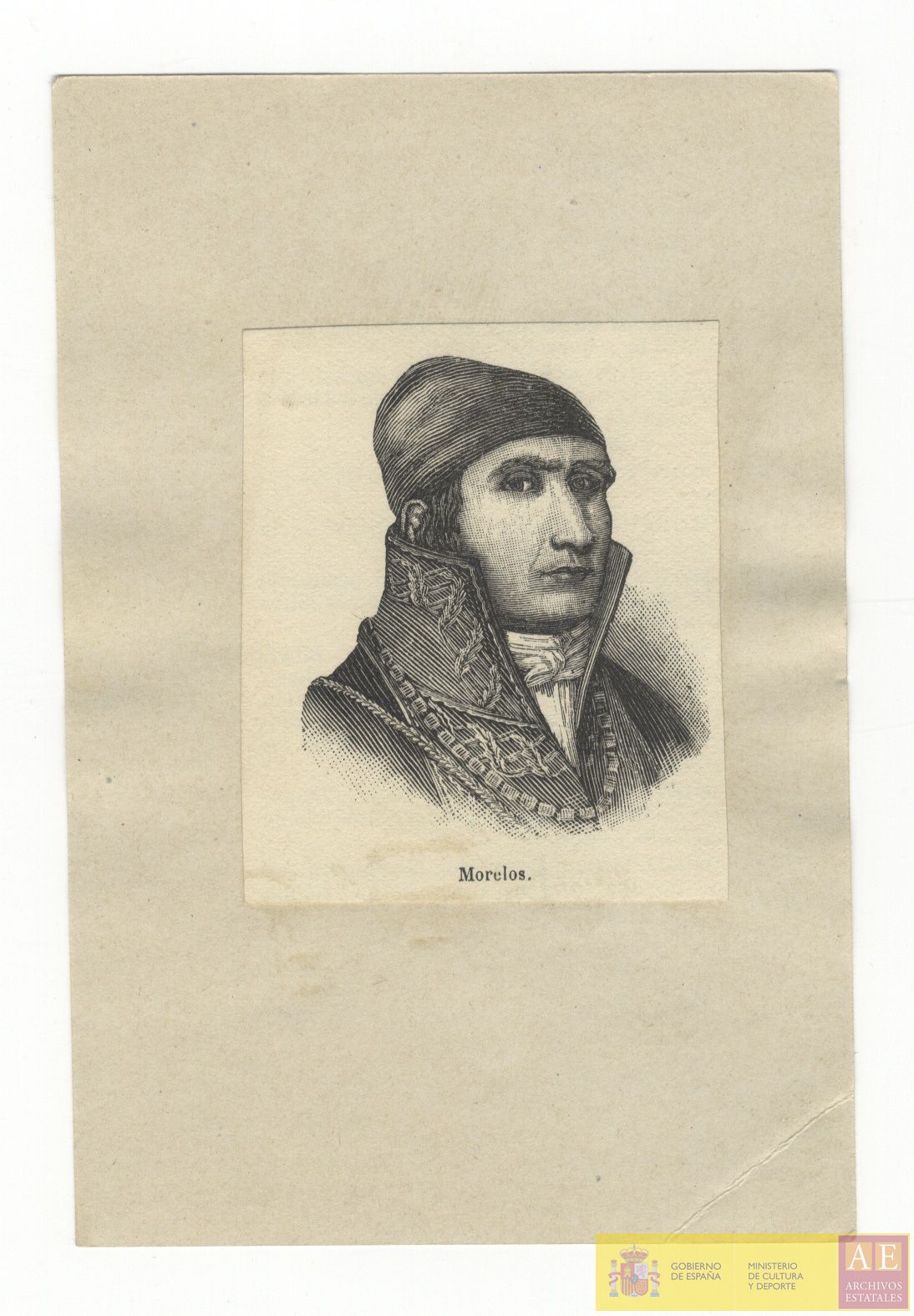 Persona - Morelos, José María (1765-1815)
Persona - Morelos, José María (1765-1815)
Identificación
Tipo:
Persona
Forma autorizada:
Morelos, José María (1765-1815)Otras formas
Fechas de existencia:
Morelia (Michoacán, México) 1765-09-30 - México (estado, México) 1815-12-22
Historia:
Sacerdote, militar insurgente y patriota novohispano.
Nació en Valladolid de Michoacán en 1765. Quedó huérfano pronto y fue protegido por su tío Felipe Morelos. Protagonista de la segunda etapa (1811-1815) de la Guerra de Independencia Mexicana:
-Miembro de la Suprema Junta Nacional Americana: 19 de agosto de 1811 - 15 de septiembre de 1813.
-Generalísimo y Jefe de Gobierno del Congreso de Anáhuac: 15 de septiembre de 1813 - 24 de octubre de 1814.
-Presidente del Supremo Gobierno Mexicano: 24 de octubre de 1814 - 5 de noviembre de 1815.
Mestizo de ascendencia pobre, fue vaquero y en 1790 ingresó en el colegio de San Nicolás, regido entonces por Miguel Hidalgo (1753-1811), finalizando la carrera eclesiástica en 1795. En octubre de 1810 siendo cura de Caracuaro, se unió a Hidalgo en Indaparapeo, y fue comisionado para llevar la insurrección al sur del país. Desde el primer momento mostró sus capacidades políticas y militares, estableciendo en los territorios por él ocupados las siguientes medidas: restitución de sus tierras a los campesinos, exención del pago de tributos, abolición la esclavitud y devolución a los pueblos indígenas sus propiedades comunales (octubre de 1810).
Organizó un ejército reducido pero disciplinado formado por campesinos mestizos y mulatos, atraídos por su programa de reivindicación social, derrotó a Francisco París en diciembre de 1810, tomó Chilpancingo (mayo de 1811), Tixtla y Chilapa, y organizó la provincia de Tecpan.
El 21 de agosto de 1811 se creó la Suprema Junta Nacional de América, cuyos miembros fueron: Ignacio López Rayón (1773 - 1832) (presidente) y José María Liceaga (1780 - 1818), José Sixto Verduzco (1770-1830) y José María Morelos. La mayor objeción que Morelos puso a esta Junta fue su acatamiento a la autoridad del rey español Fernando VII, prisionero de Napoleón en ese momento, obediencia defendida por Rayón como una medida de prudencia y moderación. Éste fue, por lo tanto, el primer núcleo de gobierno insurgente, que se atrajo la simpatía de los intelectuales y hacendados criollos que deseaban establecer un sistema de Juntas similar al implantado en las provincias de España. A finales de año, Morelos y sus lugartenientes, (Galeana, Ayala, Ávila, Trujano) eran dueños de parte de Michoacán, México, Oaxaca y Puebla, y mantenían el sitio de Acapulco, iniciado en mayo. En 1812, fue sitiado por Félix María Calleja en Cuautla de Amilpas (18 de febrero), consiguió eludir a las tropas realistas (2 de mayo) y desencadenó la más brillante de sus campañas. Tomó Orizaba y Oaxaca (noviembre de 1812) y en 1813 Acapulco (20 de agosto), con lo que el movimiento insurgente obtuvo un puerto importante con que comunicarse con el resto de América y potencias europeas.
Con el fin de superar las disidencias entre los miembros de la Junta Suprema de Zitacuaro, convocó en Chilpancingo (14 de septiembre 1813) el Congreso de este nombre, que le otorgó el poder ejecutivo, elaboró una constitución provisional de independencia. En el Congreso, presentó su "Sentimiento de la Nación", en el que sintetizó su ideario político y social. Más tarde, el Congreso a instancias suyas declaró la independencia total de México (6 de noviembre de 1813). Paralelamente, Morelos había profundizado su programa social, reivindicando la disolución del latifundio (1813), por lo que se le consideró el primer insurrecto que formuló el enunciado de una reforma liberal de las estructuras agrarias. Sin embargo, la situación militar cambió cuando fue nombrado virrey Calleja, el cual fue apoyado por los peninsulares y los criollos, preocupados por las implicaciones revolucionarias de los movimientos de Morelos.
Derrotado en su intento de apoderarse de Valladolid, en diciembre de 1813, y más tarde, en Puruarán (5 de enero 1814), perdió Oaxaca y Acapulco y optó por reducirse a la defensa del Congreso que proclamó una Constitución republicana ( 22 de octubre de 1814) y fue designado Jefe del Gobierno. En un desplazamiento del Congreso fue capturado por los realistas en Texmalaca (3 de noviembre de 1815). Juzgado por un tribunal militar y por la Inquisición, murió fusilado el 22 de diciembre de 1815.
Lugares
Lugar de Residencia:
Lugar de Residencia:
Lugar de Nacimiento:
Lugar de Defunción:
Fuentes
Relaciones
Relaciones temporales :
Relaciones asociativas :






